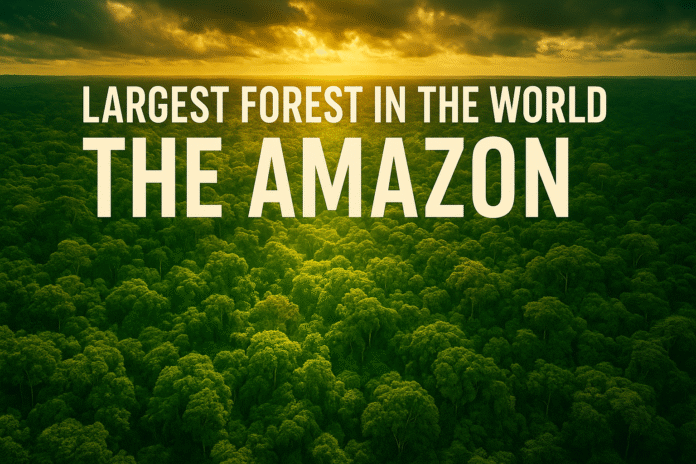More than just aggregations of trees, forests are, in fact, the lungs of the Earth: vital for our oxygen requirements, regulating the carbon we have in the atmosphere, offering countless wildlife a shelter, and maintaining bio-diversity. In the whole world, one forest stands in both area and importance – the Amazon Rainforest, also known as the largest forest in the world.
This forest spans of millions of square kilometers and literally feels like a living continent of its own. For its importance in the geosphere, scientists often call it the lungs of the Earth since it produces oxygen and absorbs carbon dioxide in enormous quantities. But the Amazon is not just a forest: it is a realm of mysteries, cultures, stories and creatures that continue to remind us how amazing our world is.
The Size and Location of the Largest Forest in the World
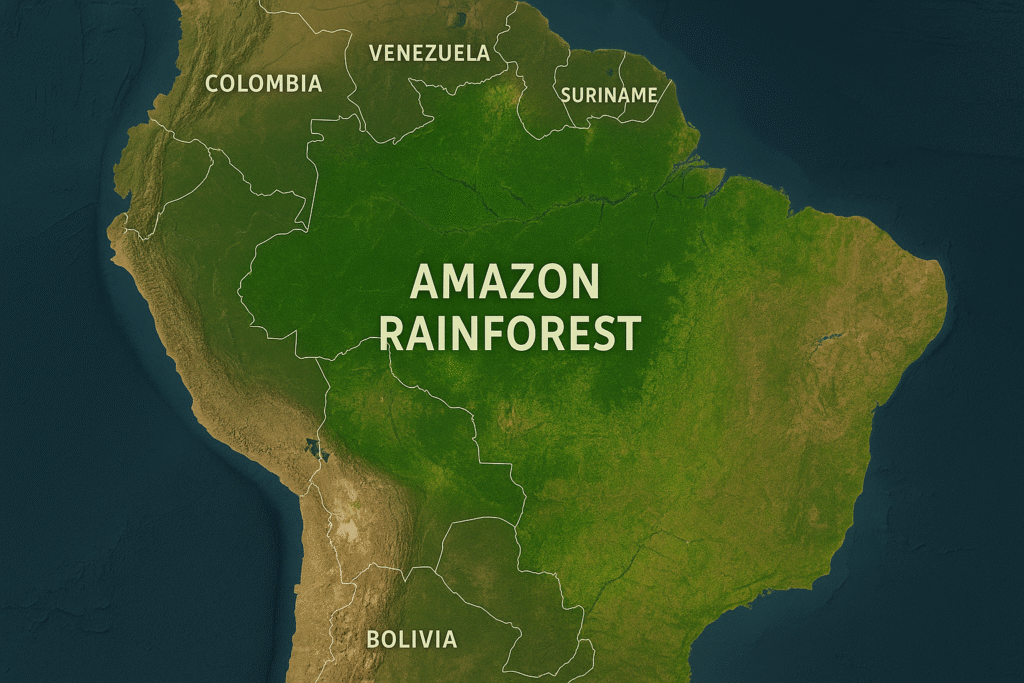
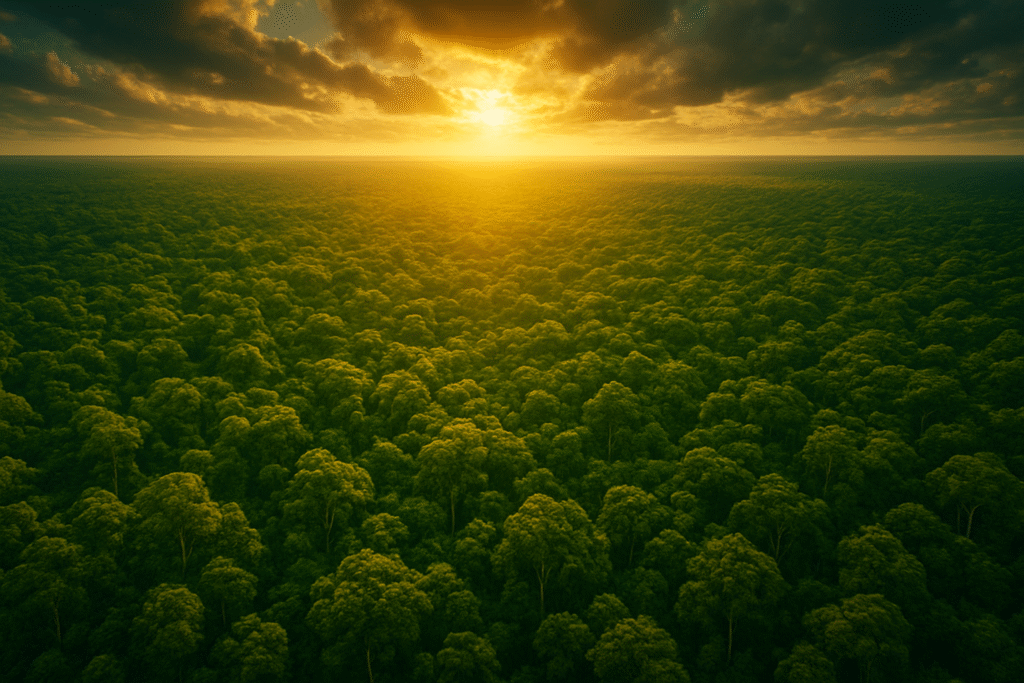
The Amazon Rainforest is the largest tropical forest in the world, spanning over 5.5 million square kilometers. That’s almost the size of the entire United States and larger than India.
Brazil, Peru, Colombia, Venezuela, Ecuador, Bolivia, Guyana, Suriname, and French Guiana are all part of the Amazon. Almost 60% of the Amazon Rainforest is in Brazil.
The Amazon River, which is the second longest of all known rivers, splits Brazil in two. It is the largest river in the world in terms of water volume, and with over 1,100 tributaries, 17 over 1,500 kilometers in length, it sustains the wildlife and local inhabitants.
The Amazon rainforest is and will always be the most important forest in the world, because it assists in maintaining the earth’s balance.
Layers of the Amazon
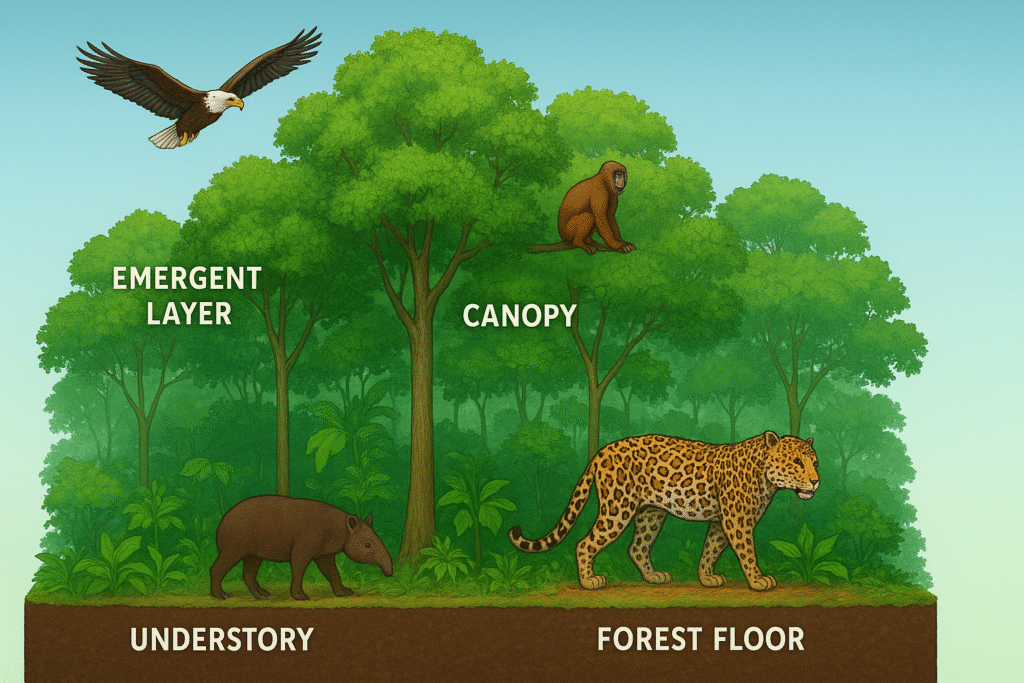
The Amazon is not a flat, uniform forest—it is a vertical world made up of multiple layers, each filled with unique life forms.
- Emergent Layer – This is the very top of the forest, where trees can grow as tall as 200 feet (60 meters). Here, you’ll find eagles, bats, butterflies, and the tallest giants of the forest stretching toward the sky.
- Canopy Layer – Often called the “roof of the rainforest,” this dense green ceiling blocks nearly 80% of sunlight from reaching the lower levels. Colorful birds, monkeys, snakes, and countless insects thrive here.
- Understory – Dark, humid, and mysterious, this layer is home to creatures like jaguars, boa constrictors, and frogs. It’s also where many plants adapted to low light grow.
- Forest Floor – The ground level is surprisingly quiet because very little sunlight reaches here. Large mammals like tapirs, anteaters, and armadillos roam here, along with predators stalking their prey.
These layers together form a perfectly balanced ecosystem, each supporting the other. Without one, the others cannot survive.
Biodiversity – A Living Treasure
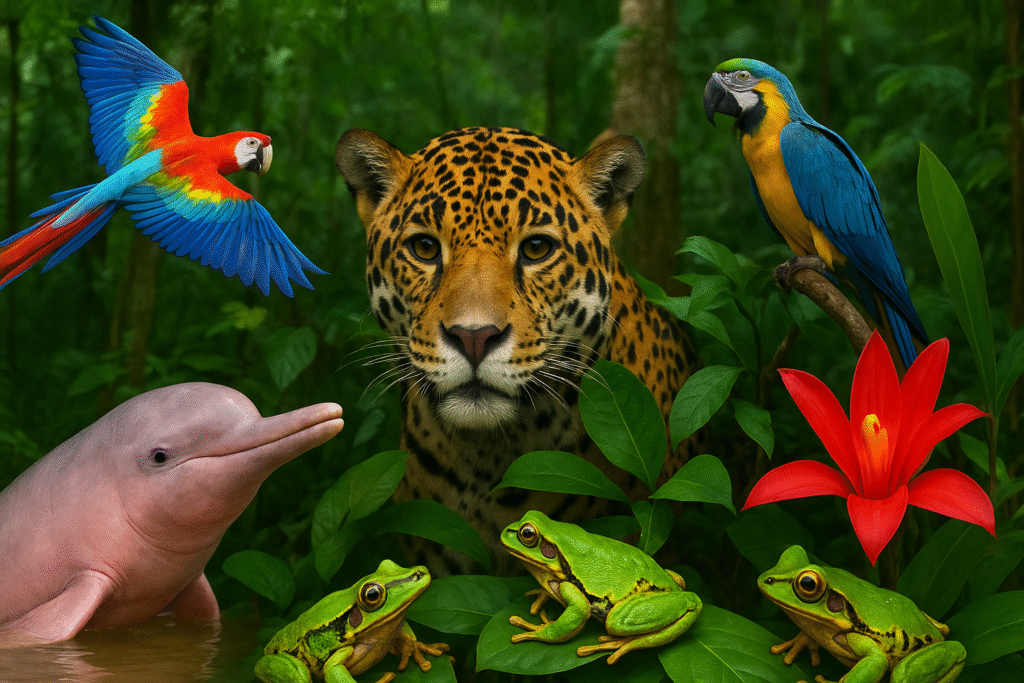
The Amazon is the most biodiverse place on Earth. Scientists estimate that one in every ten known species on the planet lives here. Imagine walking through the forest—you would encounter species that exist nowhere else in the world.
- Plants: Over 40,000 plant species, including medicinal herbs and towering trees.
- Birds: Around 1,300 bird species, from parrots and toucans to the powerful harpy eagle.
- Mammals: More than 430 species, including jaguars, pumas, sloths, and river dolphins.
- Insects: An astonishing 2.5 million different insect species, many still undiscovered.
- Aquatic Life: Over 2,200 fish species, including the giant arapaima, one of the world’s largest freshwater fish.
Every year, scientists continue to discover new plants and animals in the Amazon, proving that we still know only a fraction of what lies within the largest forest in the world.
Indigenous People and Culture
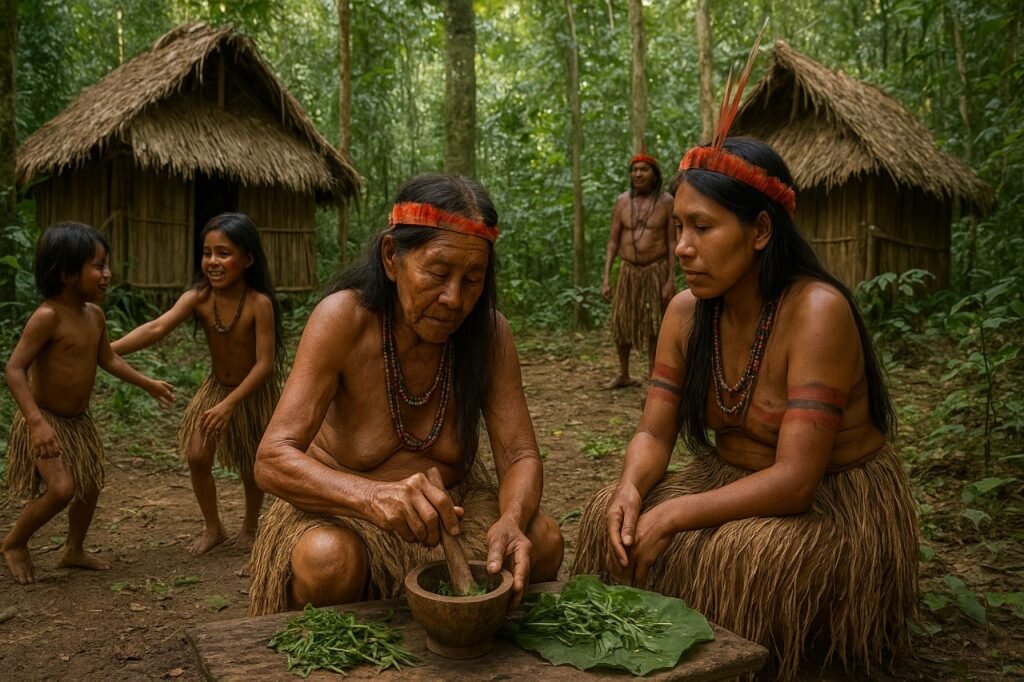
The Amazon today is not an untouched wilderness; it is home to over 400 indigenous tribes and 30 million people. Some tribes have modernized and some remain completely uncontacted, living in nomadic style. For these tribes, nature is not only a source of food and shelter, but a spiritual connection too. Indigenous Amazonians have an incredible understanding of medicinal plants and ways to live in harmony with the environment. They have a deep understanding of survival skills and how to live sustainably.
Their understanding of herbal medicine is incredibly advanced and is a major reason behind modern developments in herbal medicine. For indigenous people, protecting their culture is just as important as protecting the forest.
Why the Largest Forest in the World is Important
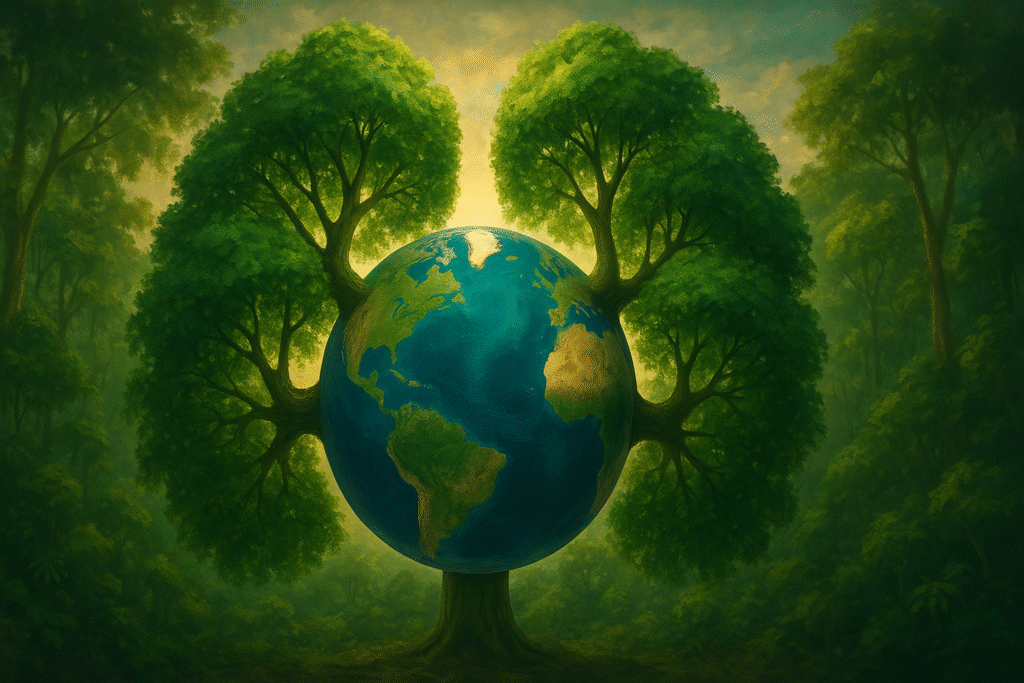
The Amazon is not just South America’s treasure—it is the lifeline of the entire planet. Here’s why:
- Oxygen Factory – It produces nearly 20% of Earth’s oxygen, making it essential for human survival.
- Carbon Absorption – The forest stores billions of tons of carbon, helping slow down climate change.
- Rainmaker – It influences rainfall patterns as far away as the United States and Africa. Without the Amazon, global agriculture would suffer.
- Biodiversity Hotspot – It holds 10% of the world’s known species, making it Earth’s most important genetic reservoir.
- Medicinal Treasure – Many life-saving drugs, including treatments for cancer and heart disease, come from Amazon plants.
- Indigenous Survival – It supports millions of people whose traditions and knowledge are tied to the forest.
In simple words, the Amazon is Earth’s natural life-support system.
Threats to the Amazon
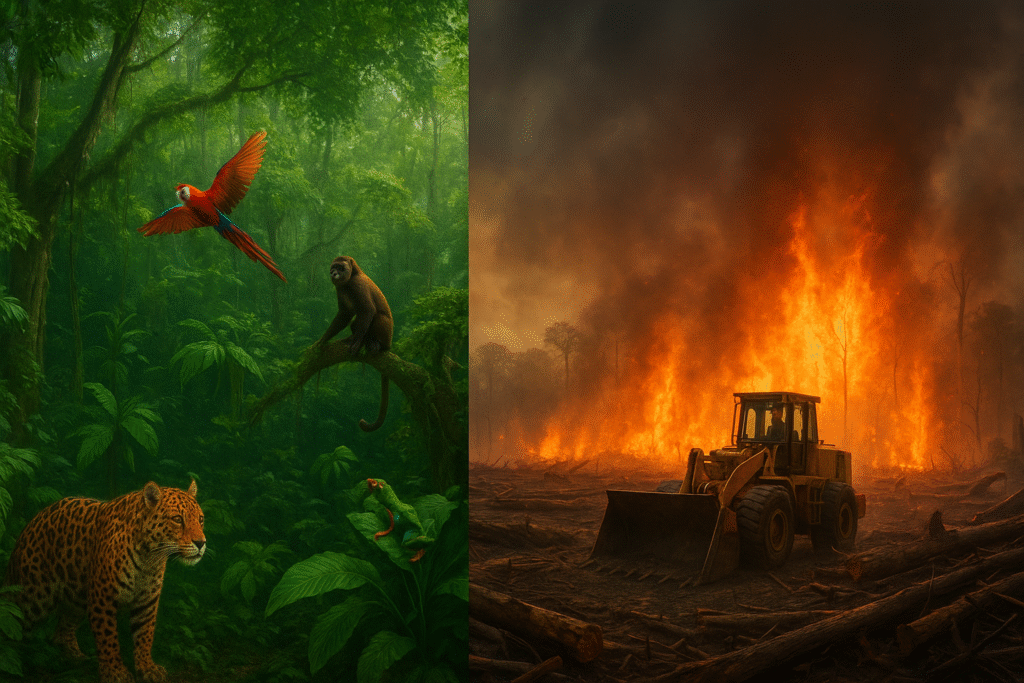
Despite its size and strength, the Amazon is in danger. The biggest threats include:
- Deforestation: Trees are being cut down for cattle ranching, soybean farming, and logging.
- Mining: Illegal gold mining is destroying rivers and poisoning them with mercury.
- Climate Change: Rising temperatures and less rainfall are causing droughts and deadly wildfires.
- Urbanization: Roads and settlements are fragmenting the forest, cutting animals off from their habitats.
- Species Loss: Scientists estimate that we lose 137 species every single day due to deforestation.
If these threats are not controlled, the Amazon could reach a tipping point where it can no longer recover, turning large areas into dry savannas.
Conservation Efforts
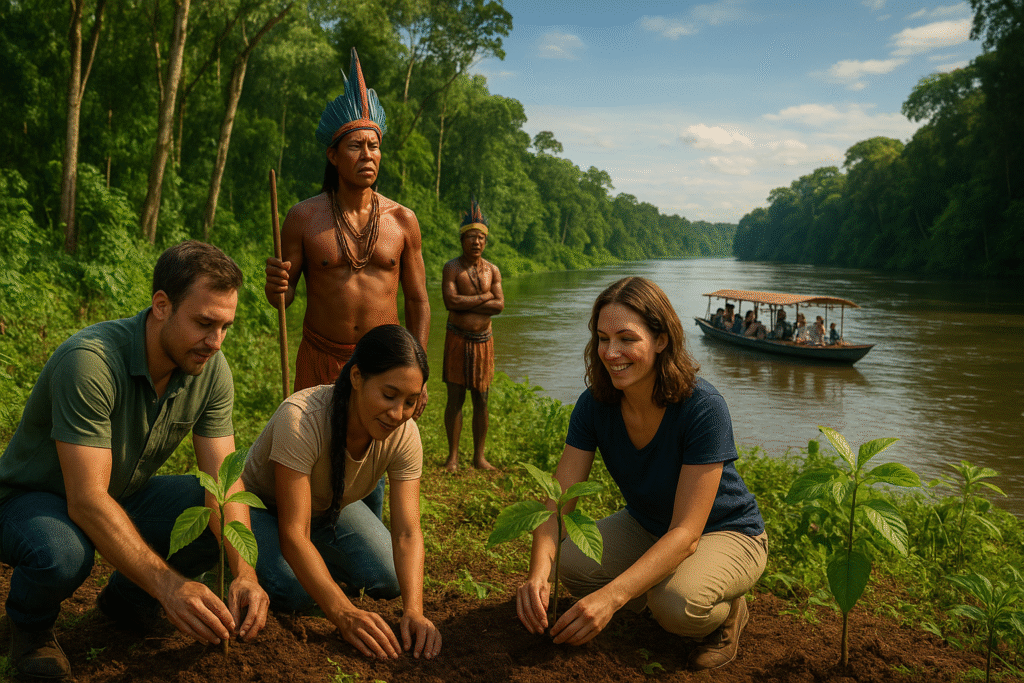
Thankfully, many organizations, governments, and local communities are working to save the Amazon:
- Expanding protected reserves to keep industries out.
- Empowering indigenous tribes to act as guardians of the forest.
- Promoting eco-tourism, which generates income without destroying nature.
- Launching tree-planting campaigns to restore deforested land.
- Encouraging international cooperation, since the Amazon’s survival affects the entire planet.
Even ordinary people can help by choosing sustainable products, reducing meat consumption, and supporting conservation projects.
Interesting Facts About the Amazon
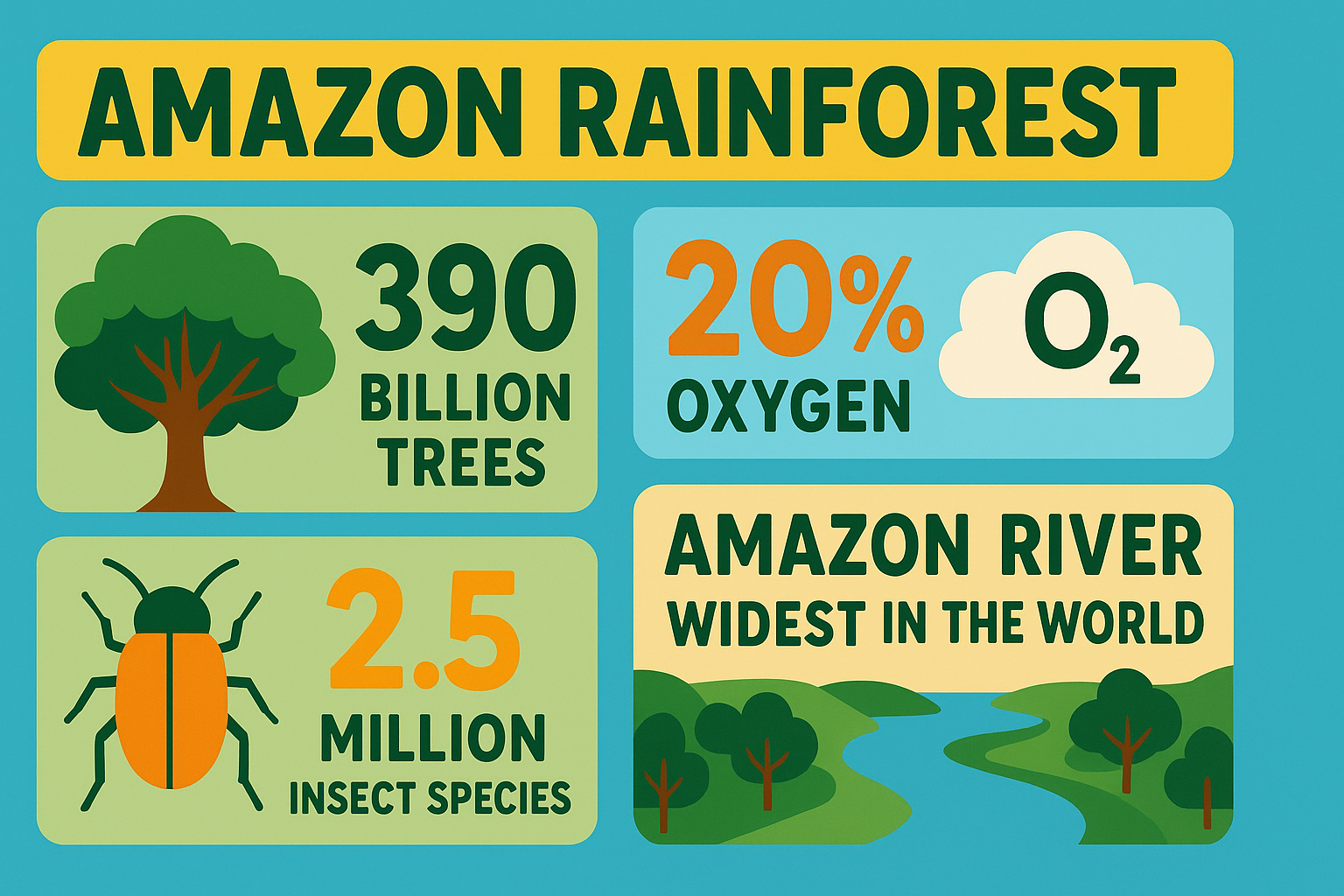
- The Amazon is home to 390 billion individual trees, belonging to around 16,000 species.
- It produces about 20% of the world’s fresh water through the Amazon River.
- The river alone is so wide that at some points, you cannot see the opposite bank.
- Scientists estimate that 90% of species in the forest are still undiscovered.
- Some tribes living here have never had contact with modern civilization.
The Future of the Largest Forest in the World

The Amazon’s future is uncertain. If current rates of deforestation continue, scientists fear that by 2050, the Amazon could shrink by 50%. This would lead to catastrophic climate effects—less rainfall, food shortages, rising global temperatures, and massive species extinction.
But there is hope. With stronger environmental laws, better global awareness, and technology-driven conservation methods, we can protect this great forest. If we act now, the Amazon will remain the largest forest in the world, safeguarding Earth for generations to come.
Conclusion
The Amazon Rainforest is not just the largest forest in the world; it is a wondrous ecosystem. It is the heart of our planet. The Amazon has incredible biological diversity, produces enormous amounts of oxygen, has deep cultural significance, and regulates the climate of the planet. The forest must be protected because to not do so is a moral failing for people and an act of violence against our descendants. This protection allows the Amazon Rainforest to continue to be the green shield of the Earth. The forest is a powerful reminder that respecting nature allows us to live in safety when the time comes to shelter.
“The Amazon is Earth’s natural life-support system.”
— From article: The Largest Forest in the World – Exploring the Amazon Rainforest


